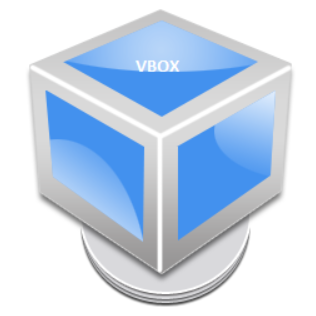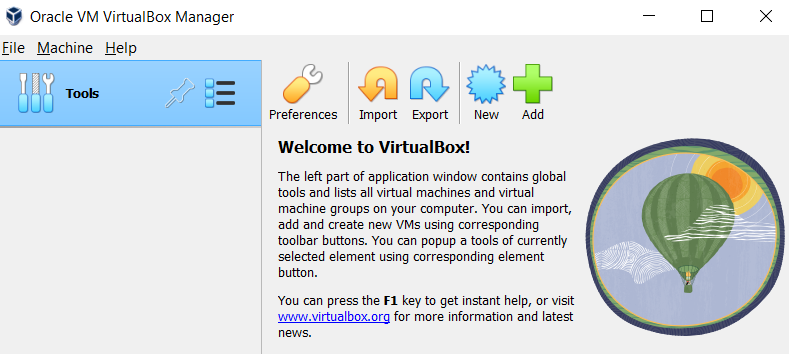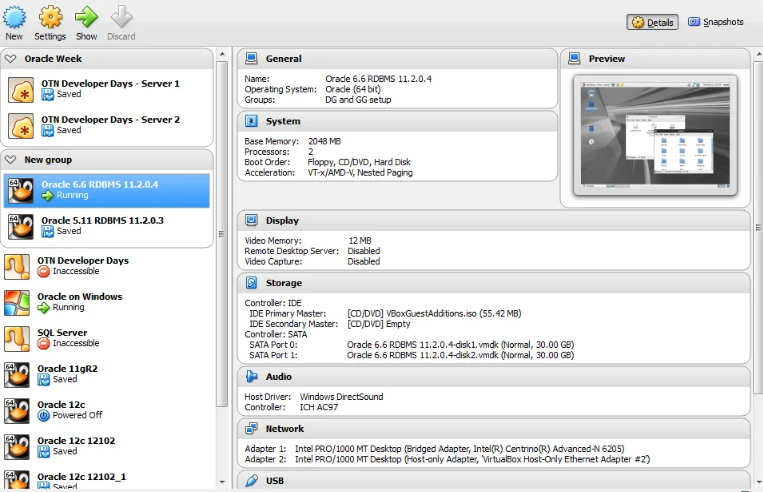What is VBox Software official Download 2025
When people talk about VirtualBox software, they usually mean a virtualization program that lets you run different operating systems on one computer. It functions as a hypervisor, creating virtual machines (VMs). Each VM acts like its own computer inside your central system.
This type of software is often used for testing, learning, or running programs that only work on older systems. Because it can host multiple operating systems at once, it gives users freedom and flexibility without needing separate hardware.
Key Features of VBbox Software
Some of the most useful features found in vBox software include:
Snapshots and Rollbacks:
You can save a virtual machine’s state and return to it later, perfect for safe testing.
Cross-Platform Support:
Hosts can be Windows, Linux, or macOS, and you can run many types of guest systems.
Guest Additions: Extra tools improve integration, making things like screen resolution and file sharing seamless.
Extension Options:
With add-ons, you can enable features like USB passthrough, remote desktop, or encryption.
Virtual Networking:
You can set up shared folders and connect VMs to networks in different ways.
Together, these features make vbox software a flexible choice for developers, IT teams, and learners.
How Virtualization Works Inside vBox software
The idea behind vbox software is simple: it lets a host machine run a guest system as if it were a real computer. The hypervisor intercepts commands from the guest and manages them so they can run safely on the host hardware.
Most of the time, the guest system’s instructions run directly on the CPU for speed. But when special instructions or hardware access is needed, the hypervisor steps in and emulates them. This balance makes virtualization fast yet compatible with many operating systems.
Benefits of Using vBox Software
There are several reasons people choose vBox software:
Cost-effective:
Instead of buying multiple computers, you can run many systems on one machine.
Safe and Isolated:
If a virtual machine breaks, your main computer stays safe.
Great for Developers:
Testing apps across different operating systems becomes easier.
Supports Older Programs:
You can run outdated software on a virtualized older system.
Portable and Shareable:
VMs can be exported, imported, or moved to other machines easily.
These benefits make it useful in both professional and personal settings.
Limitations and Things to Keep in Mind
While vbox software is powerful, it has a few limits:
Virtual machines usually run slower than real hardware.
Running multiple VMs requires strong hardware with enough RAM and CPU cores.
Some advanced hardware passthrough, like GPUs, can be tricky or unsupported.
Managing snapshots, backups, and networks takes time and practice.
Some extra features may not be free and need an additional license.
Even with these challenges, most users find it reliable for their daily or professional needs. IN THIS PARAGRAPH [ phpMyAdmin ]
Real-World Examples of vBox Software Use
Here are some ways people actually use vBox software:
Developers testing their apps across Windows, Linux, and macOS on one computer.
Students running older versions of Windows to practice without affecting their main laptop.
IT teams simulating full networks with web servers, databases, and firewalls in one place.
Testers breaking systems on purpose, then restoring snapshots for repeat experiments.
Security experts isolating risky apps inside a safe environment.
Table: vBox Software Features and Requirements
Feature / ComponentWhat It Means
Snapshots & Rollbacks Save system states and restore them anytime
Guest Additions Better Integration:
graphics, mouse, folders, clipboard.
Supported Host OS Windows, macOS, Linux.
Supported Guest OS Windows, Linux, BSD, Solaris, and more.
Extension Options Adds USB support, encryption, remote connections.
VM Portability Export and import with standard formats (OVF / OVA).
Hardware Virtualization Works best with CPUs supporting Intel VT-x or AMD-V.
This table gives a quick snapshot of what vbox software offers and what you need to use it.
Getting Started with vBox software
Install your chosen operating system inside the VM.
Download and install the program suitable for your computer system.
Create a new virtual machine by setting RAM, disk space, and CPU cores.
Add any extension packs if you need extra features like USB or encryption.
Add guest tools for smoother integration.
Take snapshots before making big changes so you can roll back if needed.
Set up shared folders and networking to exchange files and connect online.
After these steps, your VM will run like a separate computer inside your main machine.
FAQs about vBox software
Q1: Is vBox Software Free?
Yes, the base version is free to download and use. Some optional extensions may need a different license.
Q2: Can I Run more Than one Operating System at the Same Time?
Yes, as long as your hardware has enough resources, you can run multiple VMs at once.
Q3: Do Virtual Machines Slow Down my PC?
Yes, there is some performance loss, but with enough RAM and CPU, it works smoothly.
Q4: Can I use vBox Software Without a Modern CPU?
You can, but virtualization will be slower. Modern CPUs with virtualization support are recommended.
Q5: How do I Share Files Between the Host and Guest?
You can enable shared folders and install guest additions for easy file transfers.
Q6: Is GPU Passthrough Available?
Some features are limited in newer versions, so full GPU passthrough may not always work.
What is VBox Software?
When people talk about VirtualBox software, they usually mean a virtualization program that lets you run different operating systems on one computer. It functions as a hypervisor, creating virtual machines (VMs). Each VM acts like its own computer inside your central system.
This type of software is often used for testing, learning, or running programs that only work on older systems. Because it can host multiple operating systems at once, it gives users freedom and flexibility without needing separate hardware.
Key Features of vBox Software
Some of the most useful features found in vBox software include:
Snapshots and Rollbacks:
You can save a virtual machine’s state and return to it later, perfect for safe testing.
Cross-Platform Support:
Hosts can be Windows, Linux, or macOS, and you can run many types of guest systems.
Guest Additions:
Extra tools improve integration, making things like screen resolution and file sharing seamless.
Extension Options:
With add-ons, you can enable features like USB passthrough, remote desktop, or encryption.
Virtual Networking:
You can set up shared folders and connect VMs to networks in different ways.
Together, these features make vbox software a flexible choice for developers, IT teams, and learners.
How Virtualization Works Inside vBox Software
The idea behind vBox software is simple:
it lets a host machine run a guest system as if it were a real computer. The hypervisor intercepts commands from the guest and manages them so they can run safely on the host hardware.
Most of the time, the guest system’s instructions run directly on the CPU for speed. But when special instructions or hardware access is needed, the hypervisor steps in and emulates them. This balance makes virtualization fast yet compatible with many operating systems.
Benefits of Using vBox Software
There are several reasons people choose vBox software:
Cost-effective:
Instead of buying multiple computers, you can run many systems on one machine.
Safe and Isolated:
If a virtual machine breaks, your main computer stays safe.
Great for Developers:
Testing apps across different operating systems becomes easier.
Supports Older Programs:
You can run outdated software on a virtualized older system.
Portable and Shareable:
VMs can be exported, imported, or moved to other machines easily.
These benefits make it useful in both professional and personal settings.
Limitations and Things to Keep in Mind.
Getting Started with vBox Software
Download and install the program suitable for your computer system.
Add any extension packs if you need extra features like USB or encryption.
Create a new virtual machine by setting RAM, disk space, and CPU cores.
Install your chosen operating system inside the VM.
Add guest tools for smoother integration.
Take snapshots before making big changes so you can roll back if needed.
Set up shared folders and networking to exchange files and connect online.
After these steps, your VM will run like a separate computer inside your main machine.
*FAQs*
Q1: Is vBox Software free?
Yes, the base version is free to download and use. Some optional extensions may need a different license.
Q2: Can I run more than one Operating System at the same time?
Yes, as long as your hardware has enough resources, you can run multiple VMs at once.
Q3: Do virtual Machines slow down my PC?
Yes, there is some performance loss, but with enough RAM and CPU, it works smoothly.
Q4: Can I use vBox software without a modern CPU?
You can, but virtualization will be slower. Modern CPUs with virtualization support are recommended.
Q5: How do I share files between the host and guest?
You can enable shared folders and install guest additions for easy file transfers.
Q6: Is GPU Passthrough Available?
Some features are limited in newer versions, so full GPU passthrough may not always work.
*Conclusion*
To sum it up, vBbox software is a smart way to run many operating systems on one computer. It is flexible, easy to start with, and perfect for testing, development, learning, or security. While it has a few limits, the benefits far outweigh them for most people.
If you want to explore multiple systems without extra hardware, installing vBox Software is a practical and reliable choice.
To sum it up, vBox Software is a smart way to run many operating systems on one computer. It is flexible, easy to start with, and perfect for testing, development, learning, or security. While it has a few limits, the benefits far outweigh them for most people.
If you want to explore multiple systems without extra hardware, installing vBox Software is a practical and reliable choice.



